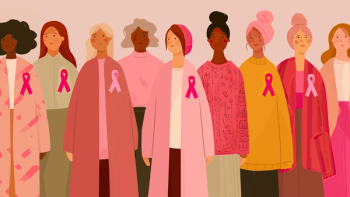
Almost Half of Patients With Gynecologic Cancer Impacted by Financial Toxicity
Recent findings showed that the cost of cancer care affects nearly half of women with gynecologic cancer, with younger and/or non-white patients at higher risk for financial toxicity.
Nearly half of patients with a gynecologic cancer reported experiencing financial toxicity, with 14.9% reporting severe toxicity. In the severe financial toxicity group, there was also an increased risk of medication non-compliance, which could lead to worse health outcomes.
The findings, which were published in the International Journal of Gynecological Cancer, showed that financial toxicity was associated with economic cost-coping strategies, which may include changing spending habits, borrowing money or not taking medications as prescribed.
“Financial toxicity doesn't have an official definition,” said Dr. Katharine M. Esselen, a gynecologic oncologist at Beth Israel Deaconess Medical Center and corresponding study author, in an interview with CURE®. “But generally speaking, it's defined as a financial burden or hardship that patient experiences as a result of their cancer diagnosis, which could be related to the diagnosis itself, in symptoms associated with it or the cost of the treatment and any associated health care that they're receiving.”
Financial toxicity may look different depending on the patient and their situation, Esselen explained, making it hard to fit into one standard definition. It may be something as straightforward as difficulty paying for medical visits, treatments or out-of-pocket expenditures, which can cause an individual to change the way they spend, borrow money or potentially delay or avoid care.
“The sort of drivers of financial toxicity we're learning more and more about, but it certainly is pretty well understood at this point that (it’s) younger patients, so patients who are likely not Medicare-eligible yet, female patients, patients with low incomes and inadequate insurance coverage, which doesn't necessarily mean no insurance but high out of pocket deductibles and cost sharing sort of types of plans,” said Esselen.
Researchers evaluated the frequency of financial toxicity in 308 patients with gynecologic cancers in varying points of treatment at two geographically distinct institutions using the Comprehensive Score for Financial Toxicity (COST), an instrument which measures the economic burden experienced by patients with cancers. They analyzed previously collected survey data of the patients, adapting a grading scale to define three groups as no/mild, moderate and severe financial toxicity. They also stratified risk factors and associations with cost-coping strategies within the groups.
Among the patients surveyed, 14.9% had severe, 32.1% had moderate and 52.9% had no/mild financial toxicity. The median age for patients with more severe levels of financial toxicity was significantly lower (63 years in the no/mild group, 60 years in the moderate group and 54 years in the severe group). Non-white race and lower levels of education were more prevalent in the moderate and severe financial toxicity groups compared to the no/mild group.
The average household income varied by group (no/mild was $87,500, moderate was $37,500 and severe was $37,500). Employment status and insurance type were associated with financial toxicity severity while the type of gynecologic cancer was not. However, the shorter the time since diagnosis, undergoing surgery or therapy were associated with financial toxicity.
Moreover, patients reporting severe financial toxicity were 4.6 times more likely to report medication non-compliance than those within the no/mild group after adjusting for income and insurance type. They were also more likely to report changes in spending habits or borrowing money.
In terms of how to address the issue, the study authors stressed that further research is necessary to determine whether compliance with recommended care and clinical outcomes differ based on the level of financial toxicity, as well as whether efforts to address toxicity at mild levels may avoid development of more severe toxicity.
“I think, first, we need certainly lots and lots more research needs to be done to understand who is at risk, what are the real drivers of toxicity and then to start to look at ways that we could maybe intervene,” said Esselen. “I think that at a very, very basic level, the first thing that we could do is just be more comfortable talking about it.”
For more news on cancer updates, research and education, don’t forget to




